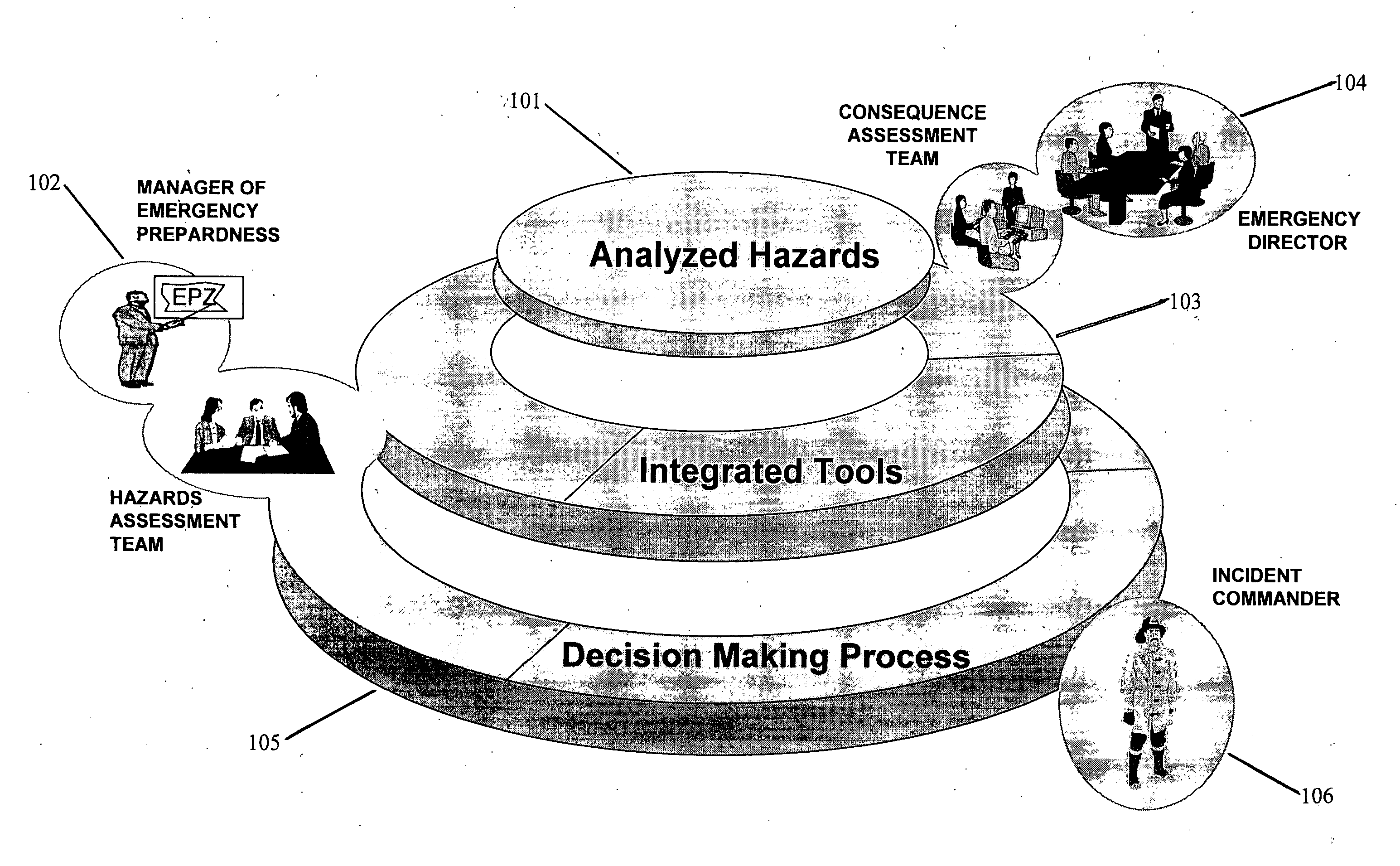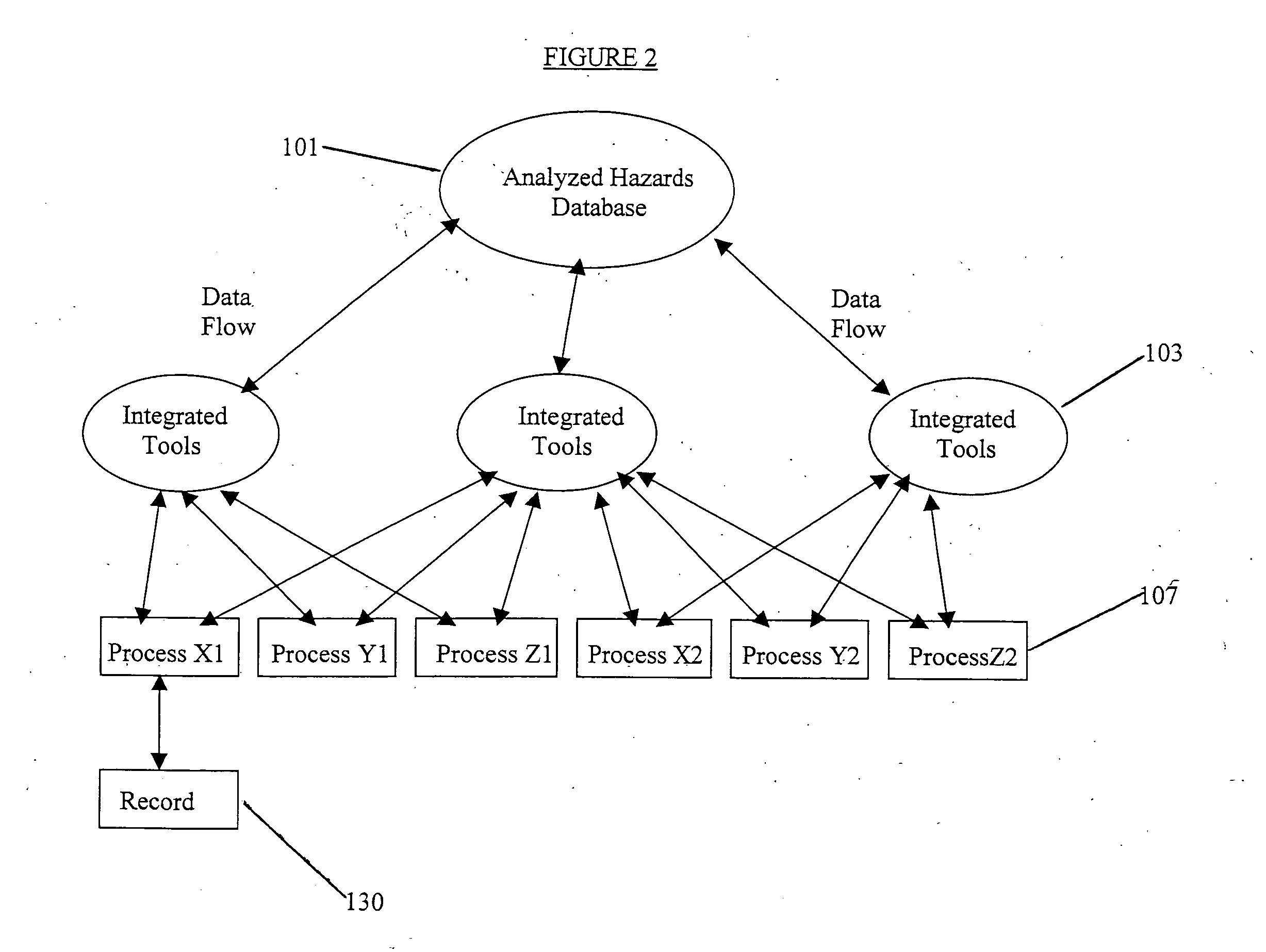System and method for integrating hazard-based decision making tools and processes
a decision-making tool and decision-making technology, applied in the field of emergency management programs, can solve the problems of limited tools for assessing data, human life risk, contamination and pollution, etc., and achieve the effect of sacrificing the consistency and integration of the system
- Summary
- Abstract
- Description
- Claims
- Application Information
AI Technical Summary
Benefits of technology
Problems solved by technology
Method used
Image
Examples
Embodiment Construction
[0023] A preferred embodiment of the present invention is illustrated in the Figures and the following detailed description. It is to be expressly understood that the descriptive embodiment is provided herein for explanatory purposes only and is not meant to unduly limit the claimed inventions. Other embodiments of the present invention are considered to be within the scope of the claimed inventions, including not only those embodiments that would be within the scope of one skilled in the art, but also as encompassed in technology developed in the future. Although a chemical hazard becoming accidentally released into the environment is often used as an example of the emergency event used with this invention, these are discussed primarily for the purposes of understanding the system and method application. It is to be expressly understood that other emergency events, both accidental and intentional, such as terrorist activities, are contemplated for use with the present invention as ...
PUM
 Login to View More
Login to View More Abstract
Description
Claims
Application Information
 Login to View More
Login to View More - R&D
- Intellectual Property
- Life Sciences
- Materials
- Tech Scout
- Unparalleled Data Quality
- Higher Quality Content
- 60% Fewer Hallucinations
Browse by: Latest US Patents, China's latest patents, Technical Efficacy Thesaurus, Application Domain, Technology Topic, Popular Technical Reports.
© 2025 PatSnap. All rights reserved.Legal|Privacy policy|Modern Slavery Act Transparency Statement|Sitemap|About US| Contact US: help@patsnap.com



